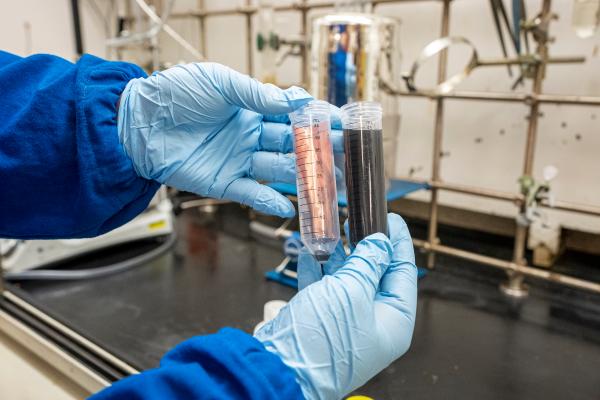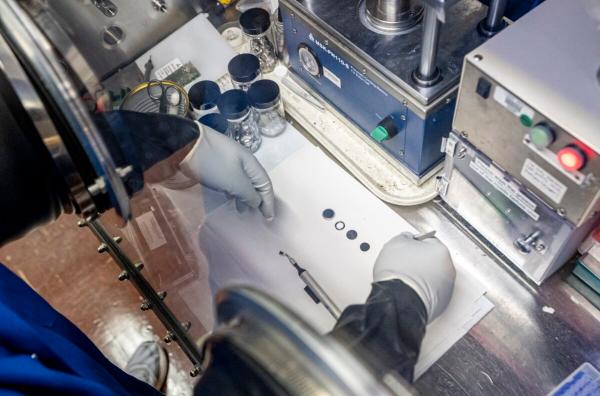Can waste lithium batteries be recycled by throwing them into alkaline water? Lawrence national laboratory introduces new battery materials.
Recycling used lithium batteries is a good business.
However, at present, mainstream battery recycling enterprises have to face a big trouble, that is, the process of battery recycling consumes a lot of energy, has high economic cost, and will produce a large number of toxic by-products.
At the beginning of February, Lawrence Berkeley National Laboratory (LBL) announced on its official website that the relevant team of the laboratory had developed a Quick-Release Binder. When lithium-ion batteries using this quick-release binder are recycled, they only need to be disassembled and put into alkaline water at room temperature, and the electrode components can be separated by gentle shaking, and then the required components can be filtered out of the water and air-dried.
At present, the relevant teams are cooperating with onto technologies, an American battery recycling company, to conduct tests, which will soon be introduced to the market.
It is understood that the binder is a colloidal substance used in most types of batteries (including lithium-ion batteries and commonly used alkaline batteries). Every battery has two electrodes — — A positive electrode and a negative electrode. The electrode is made of conductive chemicals that generate current, and the adhesive binds these active chemical components together and fixes them in a proper position to achieve consistent and lasting performance.
The quick-release adhesive invented by Lawrence Berkeley National Laboratory staff is made of two commercially available polymer materials, polyacrylic acid (PAA) and polyethyleneimine (PEI), which are connected by chemical bonds between positively charged nitrogen atoms in PEI and negatively charged oxygen atoms in PAA.
When the solid bonding material is placed in a solution containing sodium hydroxide (Na+OH – ) in alkaline water, sodium ions will enter the connection site, thus separating the two polymer materials. The separated polymer dissolves in the liquid, releasing any electrode components embedded in it.

The left vial contains a copper foil of the battery current collector. After the quick-release adhesive is dissolved, the valuable electrode components in the battery have been completely released. In the vial on the right, the adhesive is rapidly dissolving in alkaline water. In contrast, the traditional binder strongly adheres the electrode material to the current collector like glue, which makes it difficult to separate and recycle the battery electrode material.
This is in sharp contrast with the current recycling of waste lithium-ion batteries. It is understood that taking the pyrometallurgical method of lithium-ion battery recycling technology as an example, it is necessary to chop and grind the battery and separate the metal and elements after combustion. The recycling process is not only high in energy consumption and cost, but also releases toxic chemicals that must be handled carefully.
The quick-release adhesive of Lawrence Laboratories team can be used to manufacture the positive and negative electrodes of batteries, and the price is about one tenth of that of the two most commonly used commercial adhesives for batteries.
Liu Gao, a senior scientist in the field of energy technology in Berkeley Lab, a member of the Energy Storage Center of Berkeley Lab and the project leader, said: "If we don’t stop burning batteries and throwing them into the trash can, we will run out of resources in the next decade. Cobalt and nickel are not enough, and we must recycle them, otherwise we can’t keep up with the market demand for batteries. "
Another member of the team said, "In the laboratory scale, preparation is very easy, and we don’t think it will be difficult to promote it to the commercial scale." The team believes that this material can be applied to batteries of all sizes, from small batteries in mobile phones to energy storage batteries in power grids.

The team’s tests show that this adhesive can be applied to various battery types, such as button cell in the picture.
In late September 2022, this technology was rated as one of the 100 revolutionary technologies developed globally in 2022 by R&D 100 Awards.
OnTo Technology, an American battery company, is working with Liu Gao’s team to complete product testing and bring it to market. The existing experiments show that the quick-release adhesive is very stable under high voltage and low voltage, and researchers now plan to use this adhesive to build a prototype lithium-ion battery to analyze its performance.
According to Steve Sloop, the founder of OnTo Technology, the rapid release of adhesive represents a paradigm shift in battery design. This design paradigm is no longer to design the battery first and try to create a recycling process afterwards, but to become the first design for recycling.
Assuming that the test goes well, the technology will smoothly transition to commercial manufacturing. Steve Sloop said, "The battery does not contain perfluoroalkyl and polyfluoroalkyl substances (PFAS), which is also a great achievement — — PFAS is a compound used to make non-stick coatings and many other products, but it may cause many health-related problems. "
It is understood that the development of this quick-release adhesive has been supported by the Office of Energy Efficiency and Renewable Energy of the US Department of Energy.